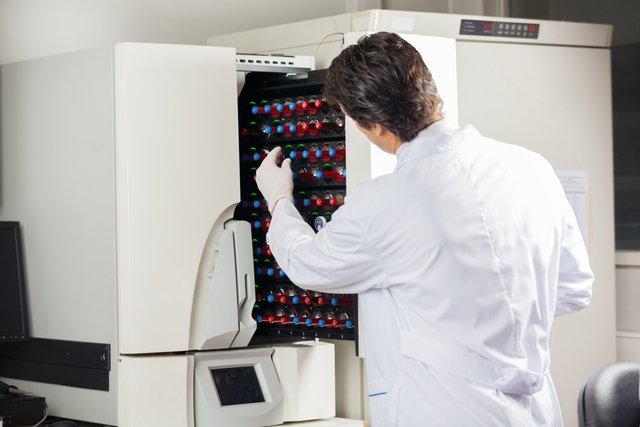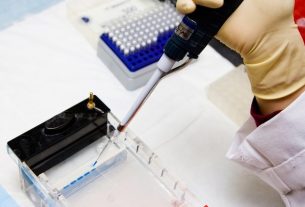Blood culture is an exam that is carried out to identify the presence of bacteria or fungi in the blood by collecting blood for specific culture media. This test is indicated in case of suspected blood infection, such as fever and chills, for example, in case of endocarditis, severe pneumonia or meningitis and when the person is using a catheter or drain.
The presence of microorganisms in the blood is considered serious, as it indicates that infectious agents and the substances they produce have managed to spread throughout the body, increasing the risk of complications.
Therefore, it is essential that treatment begins as soon as the infectious agent in the blood is confirmed, which is usually done through the use of antibiotics or antifungals directly into the vein, in addition to medications to reduce inflammation. See how blood infection is treated.

When is it indicated
Blood culture may be recommended by the doctor in case of:
- Symptoms of blood infection, such as fever, chills and excessive tiredness;
- Endocarditis, which is inflammation of the tissue lining the heart;
- After heart surgeries;
- Impaired functioning of the immune system due to cancer, HIV infection, neutropenia and/or use of corticosteroids;
- Pneumonia grave;
- Meningitis;
- Hospital infection.
Furthermore, blood culture may also be indicated for patients who are using a venous catheter or surgical drain, as the placement of these devices can promote the entry of microorganisms if they are not placed correctly.
How blood culture is done
The blood culture must be done in the hospital, as the situations in which this test is indicated require the patient to be monitored. The collected blood is placed in a container known as a blood culture bottle, which is taken to the laboratory for analysis.
In general, it is recommended that 2 to 3 blood culture samples be collected from two different locations on the body, as there is a risk of contamination of the sample during collection by microorganisms naturally present on the skin, such as Staphylococcus epidermidis. Therefore, collecting 2 samples helps confirm infection or contamination.
In some cases, the doctor may recommend collecting 4 blood culture samples and, in the case of suspected infection due to catheter placement, in addition to blood culture, culture of the catheter tip may be recommended.
It is important that blood collection for blood culture is done before starting the use of antimicrobials, as these medications interfere with the growth of infectious agents and, consequently, can alter the test results. Furthermore, in the case of fever, it is recommended that the blood culture be collected during the fever.
Types of blood culture
Depending on the way in which the sample will be processed, the blood culture can be:
- Automated blood culturein which the blood culture bottle is placed in the equipment that is responsible for carrying out the necessary tests;
- Manual blood culturein which the blood culture bottle must be incubated for up to 7 days, and the sample must be seeded in a specific culture medium after 24 and 48 hours and on the 7th day, and Gram staining must be performed if microbial growth is observed.
In the case of manual blood culture, if microorganism growth is detected, manual biochemical tests for microbial identification must be carried out, in addition to the manual antibiogram.
Blood culture with antibiogram
When the growth of infectious agents is identified by the equipment, an antibiogram is also performed with the aim of identifying which antimicrobials that microorganism is sensitive or resistant to. This way, the doctor can recommend the best antibiotic for the patient. Understand how the antibiogram is performed.
What does the result mean
The result of the blood culture may be indicated in the report as:
- Positive, when the growth of microorganisms was observed in two or more samples. In this case, the infectious agent that was identified and its sensitivity and resistance profile are indicated;
- Negativewhen no infectious agents were identified in two or more samples.
The result of the blood culture must be communicated to the doctor so that treatment can be started or adjustments can be made and, thus, complications can be prevented.
Bibliography
- JUNIOR, CARLOS AUGUSTO GF Blood culture routine. Available at: <https://www.saudedireta.com.br/docsupload/1340447084ccih.pdf>. Accessed on 02 Dec 2022
- LABORCLIN. Culture medium intended for the isolation of microorganisms in blood samples – Blood Culture. Available at: <https://www.laborclin.com.br/wp-content/uploads/2019/06/HEMOCULTURA-MANUAL.pdf>. Accessed on 02 Dec 2022
- RUSCHEL, Denise B.; RODRIGUES, Adriana D.; FORMOLO, Fernanda. Profile of positive blood culture results and associated factors. Journal of the Brazilian Society of Clinical Analysis. Vol 49. 2 ed; 158 – 163, 2017

Sign up for our newsletter and stay up to date with exclusive news
that can transform your routine!
Warning: Undefined array key "title" in /home/storelat/public_html/wp-content/plugins/link-whisper-premium/templates/frontend/related-posts.php on line 12
Warning: Undefined array key "title_tag" in /home/storelat/public_html/wp-content/plugins/link-whisper-premium/templates/frontend/related-posts.php on line 13



